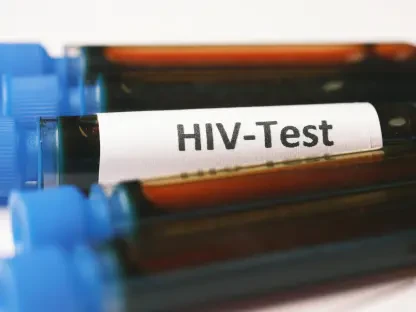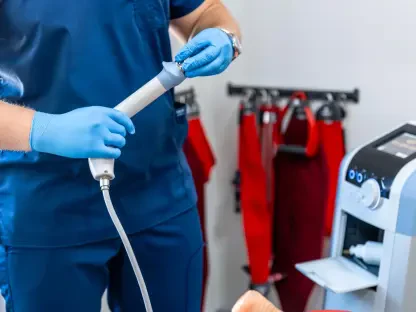In a startling turn of events, Erica Kahn, a Massachusetts resident, found herself facing a staggering $21,000 medical bill after an unusual encounter with a bat while vacationing in Arizona’s Glen Canyon National Recreation Area. This bizarre incident, which occurred during a night of stargazing and photography, spiraled into a financial ordeal that exposed the harsh realities of navigating the American healthcare system without adequate insurance. What began as a fleeting moment of shock—when a bat flew into her face and briefly got stuck in her mouth—quickly transformed into a sobering lesson about the importance of understanding health coverage. Kahn’s story not only highlights the unpredictability of life but also serves as a stark reminder of the consequences that can follow a single, unexpected mishap. The intersection of personal decisions and systemic insurance barriers turned a peculiar wildlife encounter into a costly crisis, prompting a deeper look into the factors that led to such an exorbitant expense.
Unforeseen Encounter and Immediate Risks
The incident that set off this chain of events was as unusual as it was alarming. While capturing images of the night sky, Erica Kahn experienced a moment of terror when a bat collided with her face, becoming momentarily entangled between her camera and her mouth as she screamed in surprise. Though she did not believe she was bitten, the potential risk of rabies—a deadly viral disease transmitted through bat saliva or scratches—was too significant to ignore. Following the advice of her physician father, Kahn sought immediate medical attention to begin rabies prevention treatment, a decision endorsed by experts in travel medicine who stress the high risk associated with such direct contact. The urgency of the situation underscored the critical need for prompt action in the face of potential exposure, even when physical evidence of a bite or scratch is absent. This initial response, while medically sound, marked the beginning of a financial burden that Kahn could not have anticipated at the time of the startling encounter.
Beyond the immediate shock of the bat incident, the medical response revealed the complexities of addressing such rare but serious health risks. Rabies treatment, which often involves a series of post-exposure prophylaxis shots, is not only time-sensitive but also expensive, particularly when administered across multiple healthcare facilities. Kahn received care in clinics and hospitals spanning Arizona, Massachusetts, and Colorado, reflecting the logistical challenges of seeking treatment while away from home. Medical professionals agree that delaying or forgoing treatment in such cases is not an option due to the near-certain fatality of untreated rabies. However, the cost of this life-saving intervention quickly accumulated, catching Kahn off guard as she navigated an unfamiliar healthcare landscape. This scenario highlights how even the most prudent health decisions can lead to unforeseen financial consequences, especially when compounded by other systemic factors beyond an individual’s control.
Insurance Missteps and Financial Fallout
At the heart of Kahn’s financial predicament was a critical misstep in her approach to health insurance. Having recently been laid off from her position as a biomedical engineer, she made the decision to forgo maintaining coverage, assuming she could enroll in a plan after an incident and still receive benefits. The day following the bat encounter, Kahn signed up for a policy, only to discover later that her $20,749 medical bill for rabies treatment would not be covered. The plan she chose was a limited, fixed indemnity insurance policy with a 30-day waiting period and did not comply with Affordable Care Act standards, leaving her responsible for the full cost. This harsh reality exposed a significant gap in her understanding of how insurance operates, particularly the safeguards insurers put in place to prevent enrollment only at the point of need. The staggering bill became a painful lesson in the necessity of continuous coverage to protect against unexpected medical emergencies.
Adding to the complexity of Kahn’s situation is the broader issue of insurance literacy and the pitfalls of inadequate plans. Experts in health policy, such as those from academic centers focused on insurance reform, point out that many individuals lack a clear grasp of policy details like waiting periods and coverage limitations. Insurers design these restrictions to maintain system sustainability by discouraging adverse selection, where people only seek coverage when they anticipate high medical costs. Kahn’s assumption that immediate enrollment would shield her from expenses reflects a common misunderstanding among the uninsured or underinsured. Her case illustrates how personal decisions, when made without full awareness of insurance intricacies, can intersect disastrously with rigid systemic rules. The financial fallout from this incident serves as a cautionary tale, emphasizing the importance of proactive planning and thorough research into health plans long before a crisis strikes.
Lessons Learned from a Costly Mishap
Reflecting on the aftermath of this extraordinary event, the key takeaway from Erica Kahn’s experience was the undeniable value of maintaining uninterrupted health insurance. Her decision to let coverage lapse after losing her job, coupled with a misplaced belief in retroactive protection, resulted in a financial hit that could have been mitigated with prior planning. The consensus among medical and insurance experts who reviewed her case was unanimous: proactive coverage is not just a safety net but a necessity in a healthcare system where costs can escalate rapidly. Kahn’s journey through multiple treatment centers, while necessary to address a potentially fatal risk, ended with a bill that underscored the vulnerabilities of being uninsured at a critical moment. This incident became a stark reminder that life’s unpredictabilities demand preparation, especially when it comes to safeguarding personal health and finances.
Looking back, the resolution of Kahn’s ordeal offered a pathway for others to avoid similar pitfalls. Her story prompted discussions on the need for better public education about insurance options and the risks of coverage gaps. While she faced the daunting task of managing a $21,000 debt, the broader implication was clear: individuals must prioritize understanding policy terms and securing comprehensive plans well in advance of any emergency. The healthcare system, often unforgiving in its structure, showed no leniency for last-minute enrollments or non-compliant plans. Moving forward, the focus should be on accessing resources and guidance to navigate insurance choices effectively, ensuring that a fleeting encounter with wildlife—or any sudden mishap—does not translate into a lifelong financial burden. Kahn’s experience ultimately stood as a call to action for greater awareness and diligence in personal healthcare planning.









